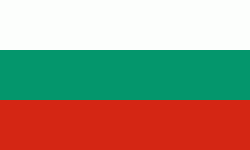Kyustendil Province (Oblast Kyustendil)
The region features diverse surface relief — fertile valleys and canyons, separated by hillocks and mountains. The northern and western parts of the territory form the so-called "Kyustendilsko kraishte" (Kyustendil Cornerland) and include parts of the cross-border Milevska, Chudinska, Zemenska and — to the east — Konyavska mountains. To the south, the Kyustendilsko kraishte reaches as far as the valleys of the Dragovishtitsa and Bistritsa rivers, as well as the Lisets mountain. The southern part of the region includes massifs of the Osogovo, Vlahina and northwestern Rila mountains, embracing the Kamenitsa, Kyustendil and Dupnitsa lowerlands.
The region is divided in two under-districts: Kyustendil in west and Dupnitsa in east. In Dupnitsa region there are the geographic areas of Gorno pole (Upper field), Dolno pole (Lower field), and the area Razmetanitsa where the Emperor Samuil of Bulgaria killed his brother Aron and his family.
The region abounds with granites, clays, fossils, and ores. Polymetal ores are excavated in Osogovo; brown coals in the Bobov dol mines. Clays deposits are located at the villages of Chetirtsi, Yahinovo and Dragovishtitsa. The region, however, is most famous for its numerous mineral water springs: hot mineral water springs in Kyustendil, Sapareva banya, the villages of Nevestino and Chetirtsi. A marvel of nature, found in the region are the Stobski piramidi (Stob pyramids).
For the most part, the climate is transcontinental, but at higher altitudes it is mountainous. The main drainage river is Struma whose subsidiaries are the Treklyanska, Dragovishtitsa, Bistritsa, Slokoshtitsa, Novoselska, Dzherman and Rila rivers. Subterranean water levels are relatively high. Near the village of Kamenichka Skakavitsa, the Golemi dol river forms a 70-meter-high waterfall. The Dyakovo, Bersin, Drenov dol and Bagrentsi artificial lakes (dams) are chiefly used for irrigation purposes. Soil composition is most favorable for the traditionally developed fruit-growing.
Forest vegetation is mostly deciduous, although coniferous forests are present. The Gabra natural reservation (area: 89,5 metric hektares) houses the last remaining black-pine trees.
Map - Kyustendil Province (Oblast Kyustendil)
Map
Country - Bulgaria
 |
 |
| Flag of Bulgaria | |
One of the earliest societies in the lands of modern-day Bulgaria was the Neolithic Karanovo culture, which dates back to 6,500 BC. In the 6th to 3rd century BC the region was a battleground for ancient Thracians, Persians, Celts and Macedonians; stability came when the Roman Empire conquered the region in AD 45. After the Roman state splintered, tribal invasions in the region resumed. Around the 6th century, these territories were settled by the early Slavs. The Bulgars, led by Asparuh, attacked from the lands of Old Great Bulgaria and permanently invaded the Balkans in the late 7th century. They established the First Bulgarian Empire, victoriously recognised by treaty in 681 AD by the Eastern Roman Empire. It dominated most of the Balkans and significantly influenced Slavic cultures by developing the Cyrillic script. The First Bulgarian Empire lasted until the early 11th century, when Byzantine emperor Basil II conquered and dismantled it. A successful Bulgarian revolt in 1185 established a Second Bulgarian Empire, which reached its apex under Ivan Asen II (1218–1241). After numerous exhausting wars and feudal strife, the empire disintegrated and in 1396 fell under Ottoman rule for nearly five centuries.
Currency / Language
| ISO | Currency | Symbol | Significant figures |
|---|---|---|---|
| BGN | Bulgarian lev | лв | 2 |
| ISO | Language |
|---|---|
| BG | Bulgarian language |
| TR | Turkish language |

















